GTM Plan Template Guide: Your Complete 2025 Strategy Blueprint


The B2B SaaS landscape in 2025 is fiercer than ever, where even the most innovative solutions can struggle to stand out. Rapid technology shifts, evolving buyer demands, and the rise of Agentic AI are reshaping how software leaders compete for market share.
Yet, many startups and scale-ups find it challenging to translate breakthrough products into scalable, repeatable revenue. A proven gtm plan template is no longer optional—it is the blueprint for sustainable growth, strategic alignment, and measurable pipeline impact.
This guide delivers a comprehensive, actionable roadmap for SaaS and enterprise software leaders. You will discover GTM fundamentals, a step-by-step planning framework, proven alignment strategies between product, marketing, and sales, and practical ways to harness Agentic AI for competitive advantage.
Ready to transform your approach? Explore the strategy, tools, and templates to drive unified execution and accelerate results in 2025.
Understanding the GTM Plan: What & Why
A robust gtm plan template is the foundation of scalable growth for SaaS and enterprise software companies. It acts as a blueprint, aligning teams around how to reach the market, engage buyers, and consistently drive revenue.
Unlike a broad go-to-market strategy, which sets the vision and objectives, GTM execution is about the step-by-step actions that turn plans into measurable results. Without a structured approach, organizations risk poor product-market fit, wasted spend, and misaligned teams—common reasons why 70% of startups miss revenue targets, according to HubSpot.
A comprehensive GTM plan template should cover:
- Market segmentation and ideal customer profiles
- Compelling value propositions and messaging
- Detailed buyer personas
- Channel and route-to-market strategy
- Sales enablement and operational processes
For deeper guidance, see GTM template best practices for proven frameworks and actionable examples.
Leading SaaS firms use these templates to accelerate ARR and outperform competitors by ensuring every function is data-driven and cross-functional. Agentic AI is now reshaping GTM planning, enabling faster market analysis, real-time collaboration, and dynamic execution. This evolution makes structured GTM planning more critical than ever for 2025.
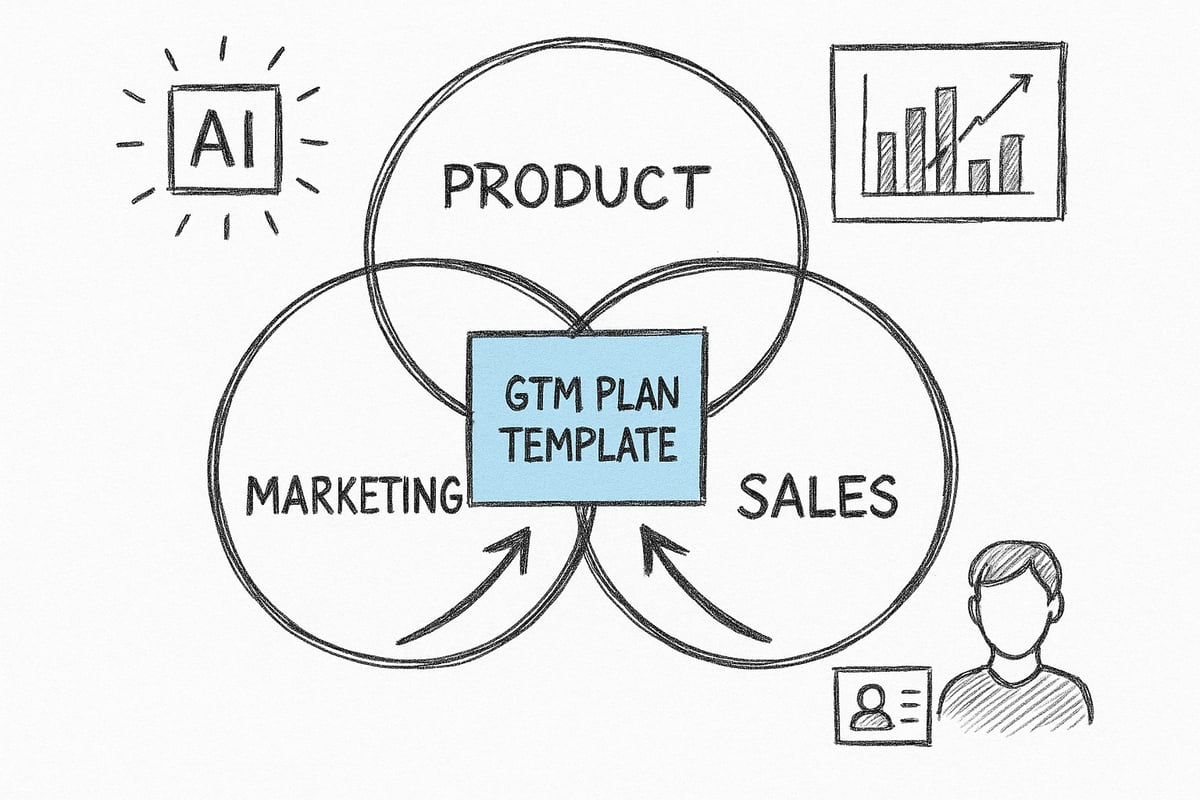
Step-by-Step GTM Plan Template for 2025
Building a modern gtm plan template for 2025 means more than ticking boxes. It requires a data-driven, AI-powered approach that aligns product, marketing, and sales from day one. Below is a five-step blueprint, each step critical to delivering scalable, repeatable growth.
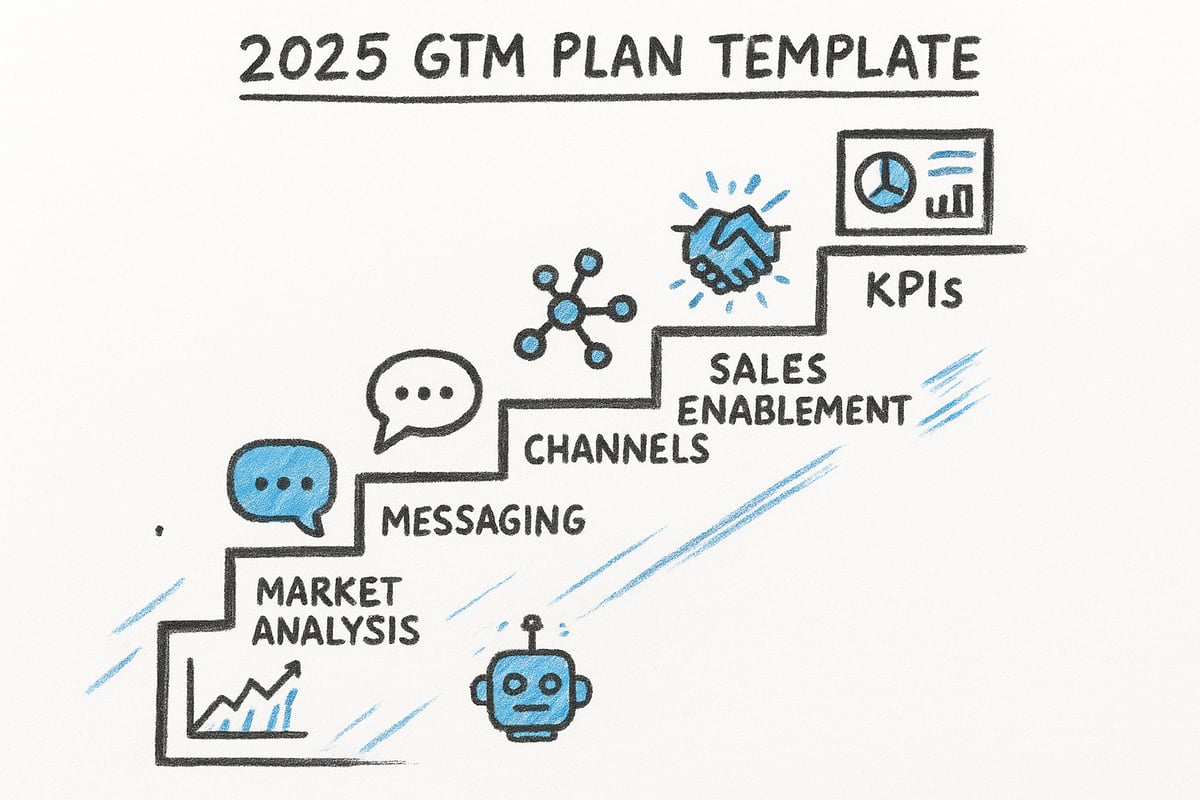
Step 1: Market Analysis & Segmentation
Start your gtm plan template by mapping the market landscape. Analyze your total addressable market (TAM), serviceable obtainable market (SOM), and define your ideal customer profiles (ICP). Use platforms like G2, Gartner, and LinkedIn, plus internal CRM data, to identify high-potential verticals.
- Segment by company size, tech stack, or digital maturity.
- Pinpoint buyer pain points through data and interviews.
- Leverage Agentic AI for faster, deeper market research and pattern recognition.
For example, a SaaS HR platform might segment mid-market tech firms using legacy systems, uncovering urgent automation needs. This structured approach ensures your gtm plan template targets segments primed for adoption.
Step 2: Positioning & Messaging
With your segments defined, craft differentiated value propositions tailored to each. Use competitor analysis to identify white space and sharpen your positioning.
- Build messaging frameworks for inbound and outbound channels.
- A/B test value statements with real buyers.
- Use AI tools for dynamic message optimization based on engagement data.
A leading SaaS cybersecurity firm, for instance, refined its messaging via Agentic AI, which dynamically adjusted copy to increase demo bookings by 25%. This step in your gtm plan template ensures your voice stands out in a crowded market.
Step 3: Channel & Route-to-Market Strategy
Choose the right channels for your ICPs. Evaluate direct sales, product-led growth (PLG), channel partners, and digital marketplaces.
- Consider buyer preferences and purchasing behavior.
- SaaS companies often expand globally by leveraging partner ecosystems.
- Agentic Automation can streamline partner enablement, onboarding, and performance tracking.
For example, a SaaS analytics vendor used AI-driven insights to prioritize digital marketplaces, accelerating enterprise deals. For a practical template to map your channels, see this B2B SaaS Go-To-Market Strategy Template.
Step 4: Sales Enablement & Revenue Operations
Equip your teams with enablement playbooks. Map the buyer journey, prepare objection-handling guides, and competitive battlecards.
- Align product, marketing, and sales for unified execution.
- Build revenue operations dashboards tracking pipeline, ARR, and conversion rates.
- Adopt AI-powered sales enablement tools for real-time coaching and content delivery.
A SaaS fintech startup integrated Agentic AI into sales enablement, enabling reps to access dynamic battlecards during live calls. This improved win rates and accelerated pipeline movement.
Step 5: Measurement, KPIs & Iteration
Define clear success metrics for your gtm plan template: pipeline growth, ARR, CAC, LTV, and sales velocity.
- Establish feedback loops for continuous improvement.
- Use AI and automation for real-time performance dashboards.
- Iterate based on data, not gut feel.
For instance, a SaaS martech firm refined its GTM approach weekly based on live dashboard insights, quickly reallocating resources to winning channels. Consistent measurement and rapid iteration are essential for GTM success.
Aligning Product, Marketing, and Sales for Unified Growth
B2B SaaS growth hinges on seamless alignment between product, marketing, and sales. Functional silos stall execution, dilute messaging, and slow pipeline momentum. When teams operate in isolation, even the best gtm plan template cannot reach its full potential, leading to missed revenue targets.
Frameworks for Alignment
| Alignment Lever | Description |
|---|---|
| Shared KPIs & OKRs | Unified goals tie teams to business impact |
| GTM Sync Meetings | Regular cross-team check-ins for clarity |
| Integrated Planning | Joint roadmaps for launches and campaigns |
| Transparent Communication | Open channels for feedback and updates |
Regular gtm syncs and integrated planning ensure everyone moves toward the same outcomes. HubSpot reports that companies with strong alignment see 36% higher customer retention, proving the real impact of these frameworks.
Agentic AI platforms accelerate this process. They enable real-time collaboration, automate data sharing, and flag blockers instantly. For example, SaaS firms using AI-driven dashboards can coordinate product launches and adjust messaging on the fly, increasing ARR predictability.
Many fast-growing teams struggle to maintain alignment as they scale. Solutions include adopting a gtm plan template, leveraging Agentic AI, and following proven frameworks. For a deeper dive into common missteps and how to avoid them, see Why most GTM strategies fail.
Unified execution is not optional for SaaS leaders. It is the foundation for scalable, repeatable revenue.
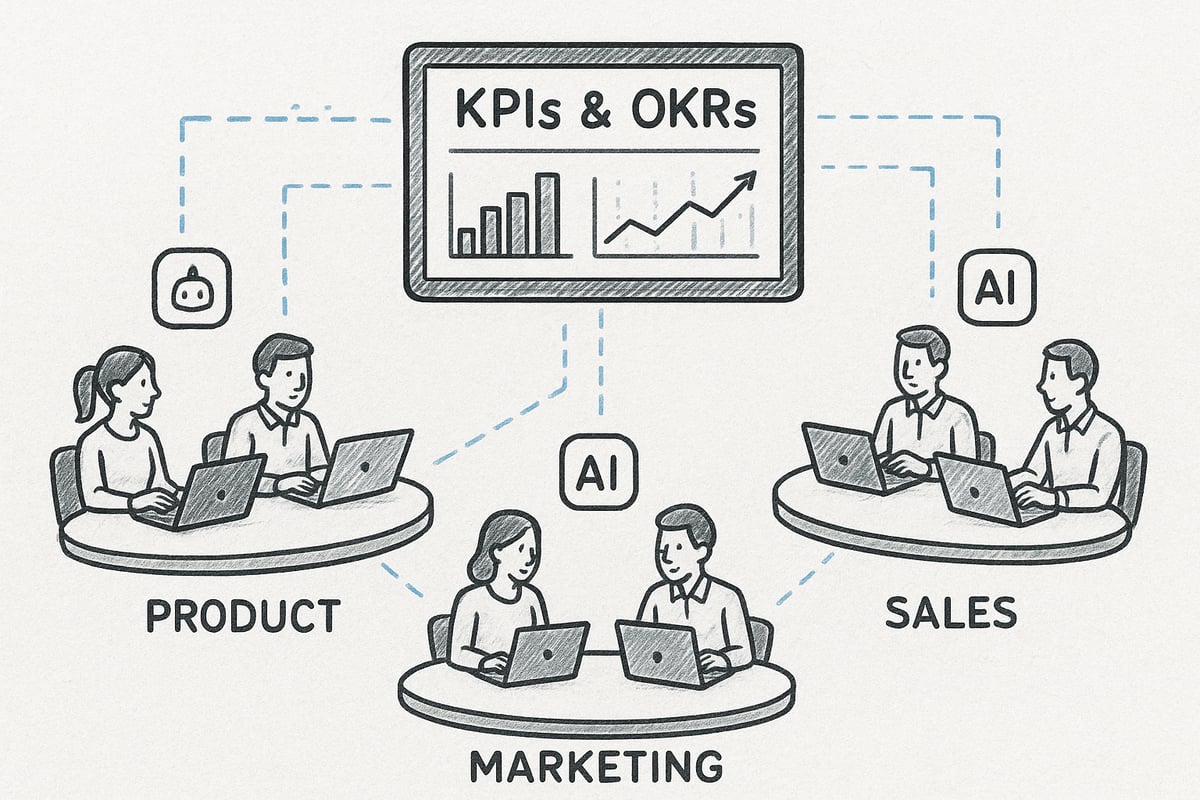
Leveraging Agentic AI & Automation in Your GTM Plan
Agentic AI is rapidly transforming how SaaS leaders approach their gtm plan template for 2025. Unlike traditional automation, Agentic AI systems can make autonomous decisions, adapt in real time, and optimize processes across product, marketing, and sales teams.
Today’s most successful SaaS companies are embedding Agentic AI into their GTM execution. Consider these high-impact applications:
- Automated market research: Instantly analyze TAM, SOM, and ICP data from sources like G2 and LinkedIn.
- Dynamic pricing models: Adjust pricing based on buyer intent, competitor moves, and market demand.
- Predictive lead scoring: Prioritize accounts with the highest conversion potential using behavioral and firmographic signals.
- AI-powered sales playbooks: Generate personalized outreach, objection handling, and deal acceleration tactics.
For example, SaaS firms leveraging Agentic Automation have reported faster pipeline growth and higher conversion rates. These tools enable rapid experimentation, which is essential for scaling with a modern gtm plan template.
The benefits are clear:
- Increased speed to insight and execution.
- Hyper-personalized messaging at scale.
- Data-driven recommendations for every stage of the funnel.
However, integrating Agentic AI requires attention to data quality, seamless tech stack integration, and proactive change management. According to Gartner, 54% of SaaS companies plan to boost AI investments in GTM operations this year.
To get started, map your GTM workflows, identify high-impact automation points, and pilot Agentic solutions in areas like lead qualification or messaging. For a deeper dive into actionable, AI-driven GTM frameworks, explore this SaaS Go-to-Market Strategy Guide.
By embedding Agentic AI into your gtm plan template, you unlock a competitive edge in speed, scalability, and revenue growth.
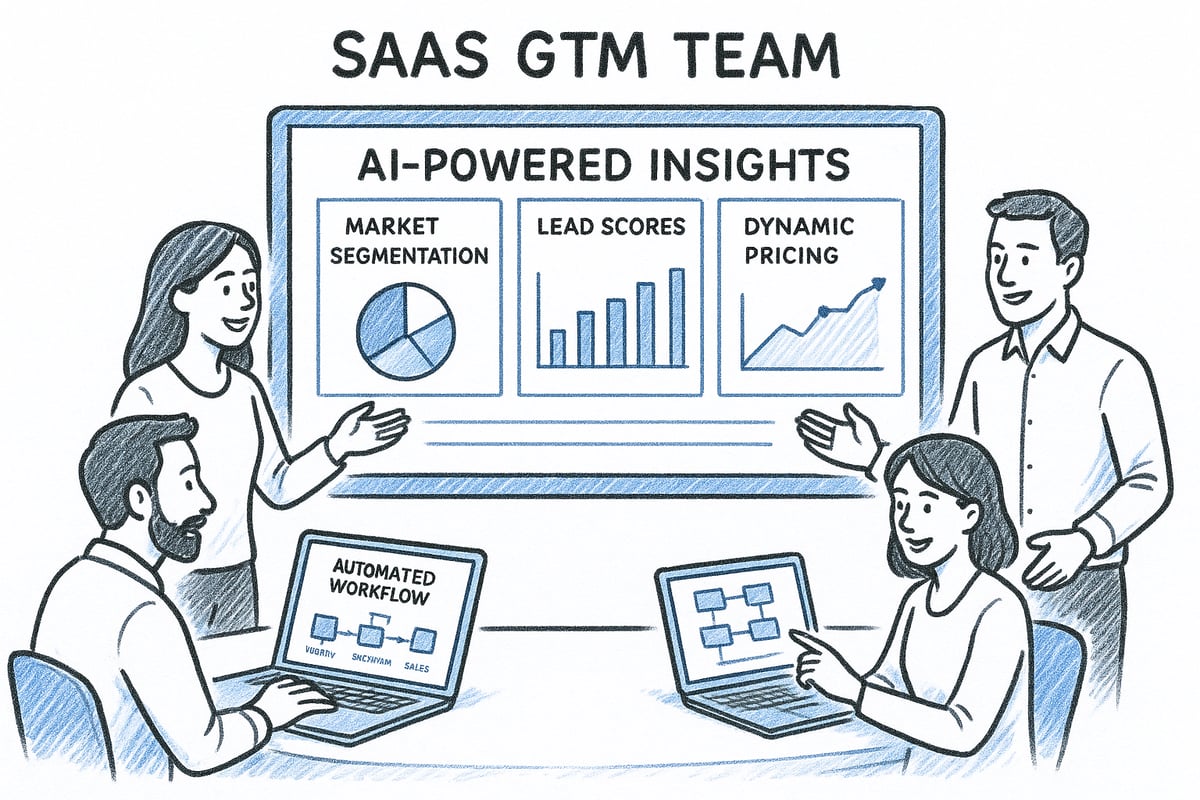
Downloadable GTM Plan Template & Best Practices
A robust gtm plan template is the backbone of any successful SaaS or enterprise software launch. The right template brings clarity, alignment, and repeatability to your go-to-market execution, making it easier to drive measurable ARR and pipeline growth.
What’s Inside a GTM Plan Template?
A comprehensive gtm plan template typically includes:
- Executive summary with clear objectives
- Market analysis and segmentation (TAM, ICPs)
- Value proposition and messaging
- Channel and route-to-market strategies
- Sales enablement and onboarding resources
- Key metrics (ARR, CAC, LTV, sales velocity)
- Review cadence and feedback loops
For a deeper dive into systematic GTM planning, explore the B2B SaaS Go-to-Market Framework 2025, which outlines proven steps for scaling to $10M ARR.
Best Practices for Customization
To maximize the impact of your gtm plan template, tailor each section to your business model, growth stage, and vertical. Involve cross-functional leaders early, and document ownership for each component. Use dynamic templates that allow for quick iteration as market data evolves.
Adopt a checklist approach for stakeholder engagement and adoption. The B2B SaaS Go-To-Market Checklist offers practical tips for aligning teams during rollout.
Common Pitfalls & Success Stories
Avoid overcomplicating your gtm plan template. Assign clear ownership and maintain version control. Companies using structured templates have accelerated time to market and achieved faster learning cycles.
Download your 2025 gtm plan template now, and make ongoing iteration a core part of your GTM process for continuous growth.
After exploring how a unified go to market plan can transform your SaaS growth in 2025, you may be wondering how to actually put these steps into action for your own team. At GTM Consult, we work closely with founders and revenue leaders to bridge the gap between strategy and real, measurable pipeline impact. Whether you want guidance on aligning your product, marketing, and sales or you need a proven framework to accelerate ARR, we’re here to help you build a scalable path forward. If you’re ready to see how a tailored GTM approach can drive your results, Book a free meeting and let’s shape your next milestone together.

Latest From
The Blog
Go To Market Strategy Consulting Guide For 2025 Success

Go To Market Strategy McKinsey Guide For Success 2025

Crossing the Enterprise Chasm: A Practical Guide to Sales-Led Growth (SLG)


Let's Build The Future Together



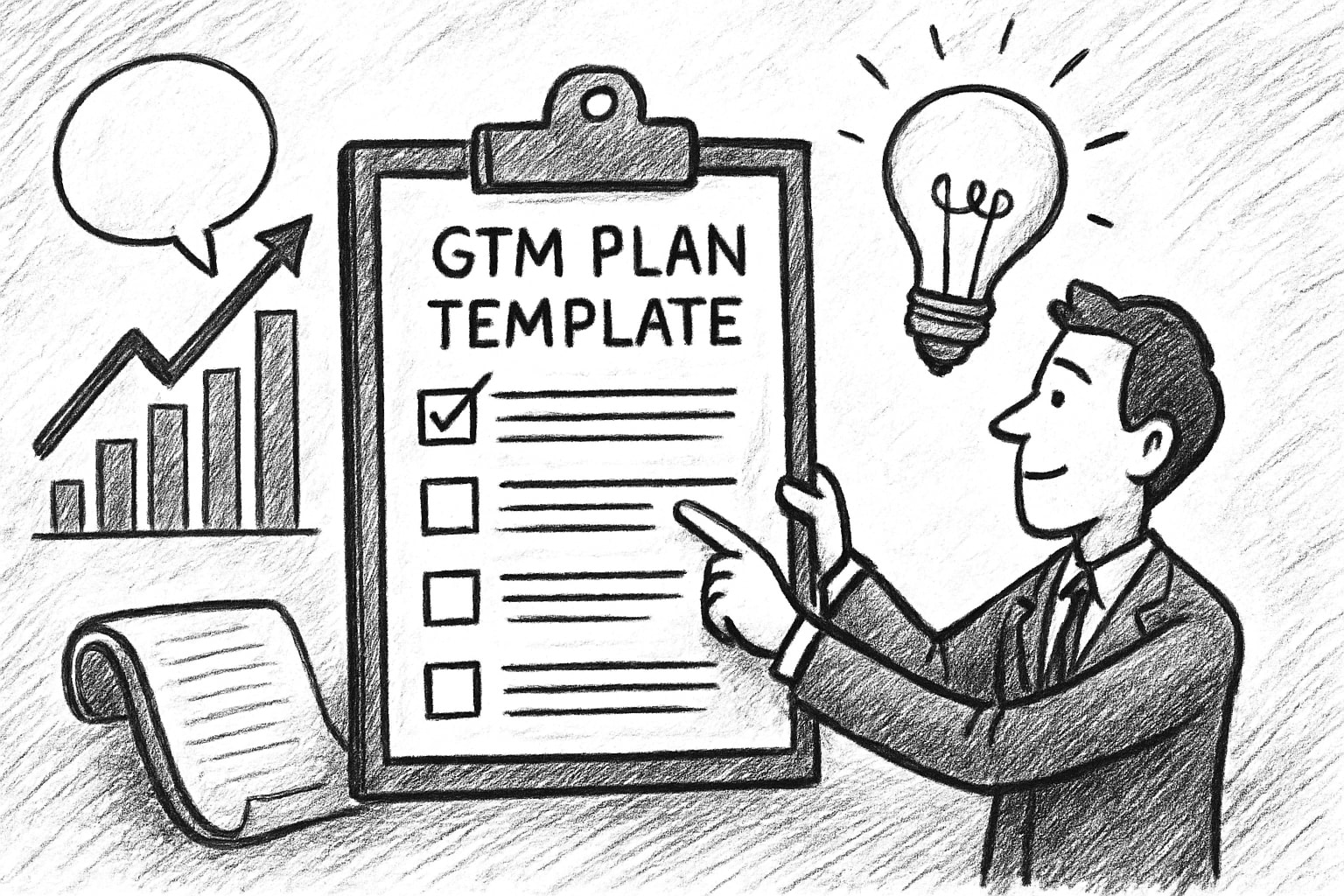
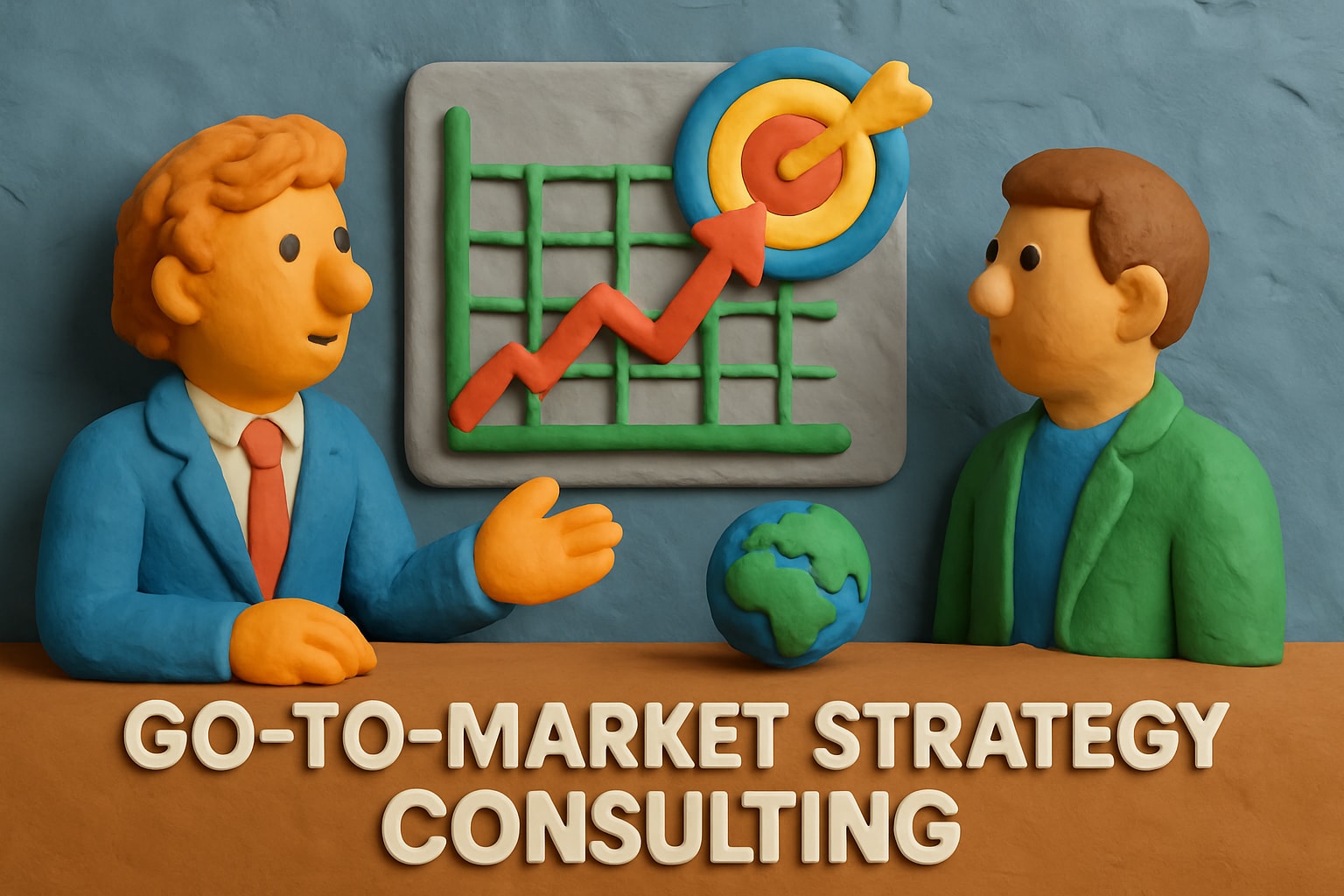
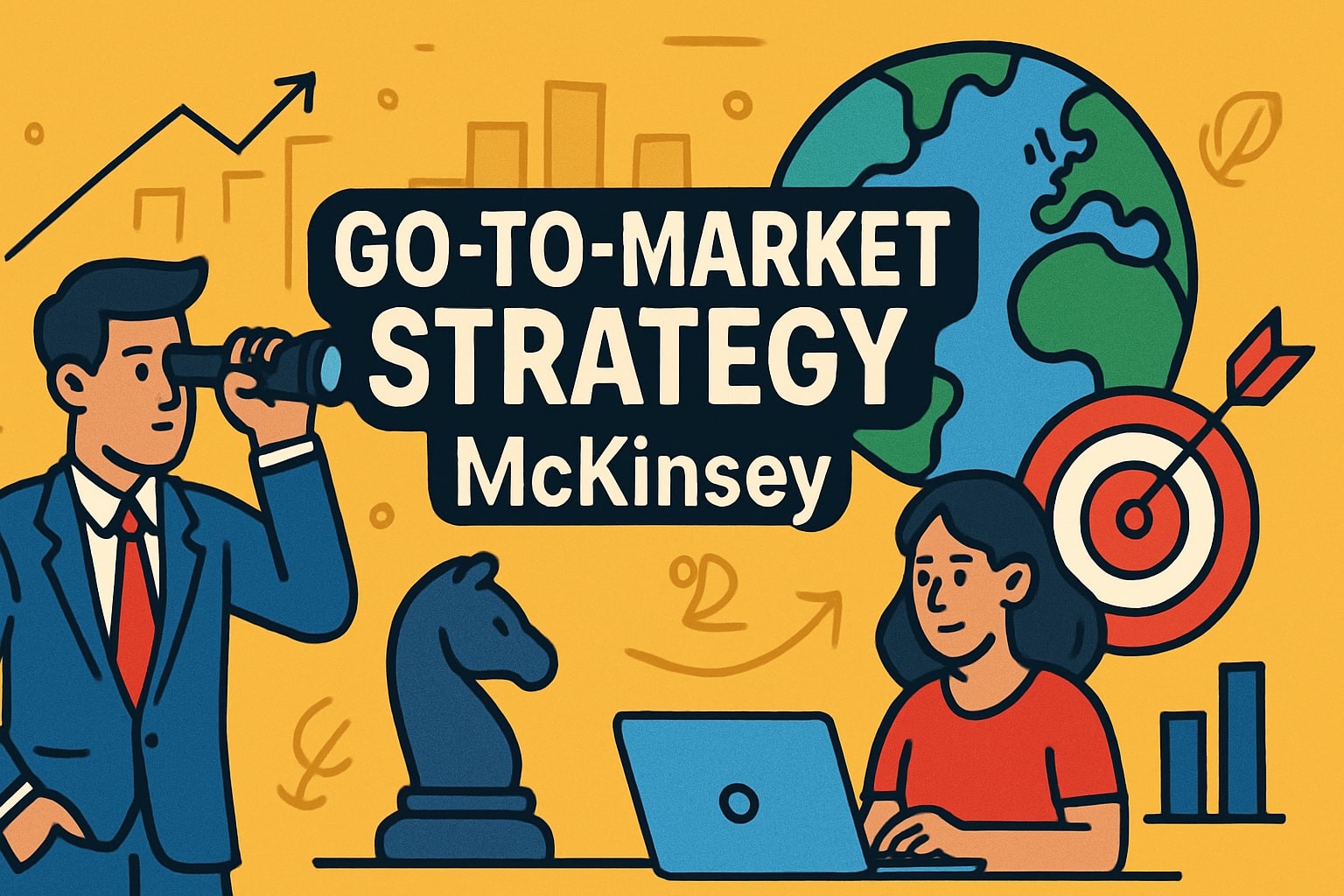
.jpg)